From a sour cherry gin to a LongHorn Steakhouse x Knob Creek collab, these are the liquors you should be drinking.
There were so many excellent bottles released this year in every category of spirits, it’s nearly impossible to narrow them down. What a good problem to have. But if it was interesting, tasted good, and was released in 2018, we considered it. This list is an assessment of what stood out from the pack, whether it was sourced, craft-distilled, re-released, or a silly marketing ploy from a major distillery. Here are the best new bottles in the following liquor categories: bourbon, rye, scotch, world whiskey (everywhere outside of Scotland and America), gin, tequila, and rum. (We didn't do vodka because, well, it’s vodka.)

.
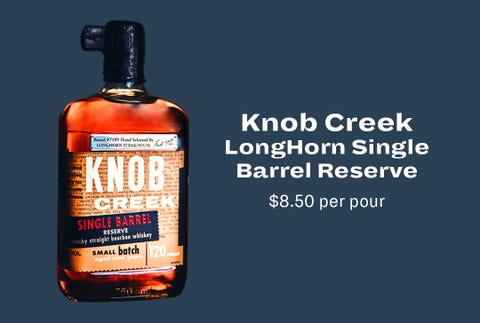
.
One of the best bourbons released this year can only be found at your local LongHorn Steakhouse. This single barrel expression from Knob Creek (we tried barrel #7093; there were about 200 barrels selected) really is that good: a 120-proof whiskey that dials everything you know and love about Knob Creek up to 11. Caramel, oak, vanilla, and even cherry are present here, putting this up there with other stellar Knob Creek single barrel releases. Fortunately, there are almost 500 LongHorns around the country, so it shouldn’t be hard to find.
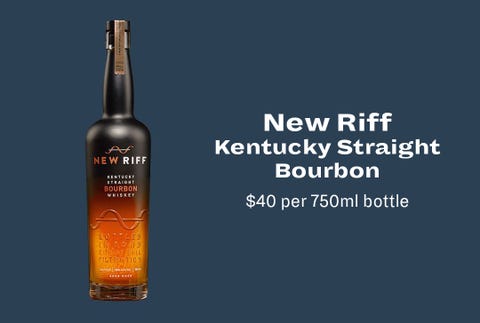
.
This year saw the first release from New Riff, a new distillery located in Newport, Kentucky (that’s a lot of “new” in one sentence). This isn’t some immature craft distillery bourbon; this is high-rye (30 percent), 100-proof, bottled-in-bond whiskey that shows you how to properly introduce a new bourbon brand. It’s light on the palate with nicely balanced notes of sweet and tang, and drinks very well on its own or in a cocktail.
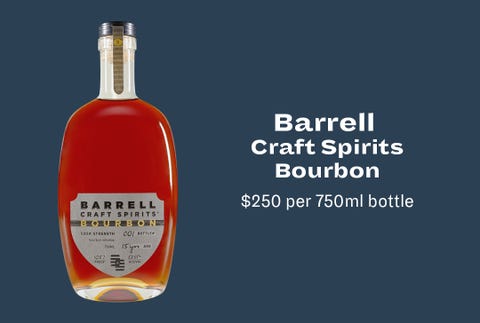
.
Barrell Bourbon has been artfully sourcing and blending whiskey and rum for years now. But the company has a new premium line called Barrell Craft Spirits, and its bourbon has been racking up recent accolades for good reason. A blend of 15-year-old whiskeys distilled and aged in Tennessee, Kentucky, and Indiana, it is bottled at 105.1 proof. The whiskey is deep and complex, with strong fruit notes that overlap a vibrant base of oak and vanilla, and just a hint of earthy funk. Sip this one slowly.

.
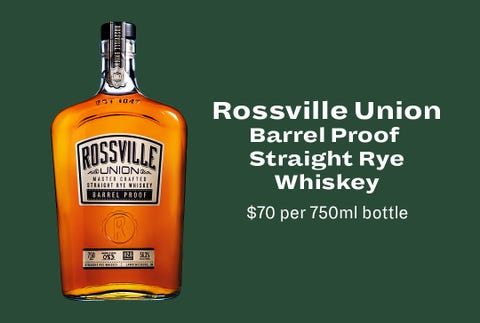
.
MGP is the massive industrial distillery in Lawrenceburg, Indiana, that is responsible for so much of the rye whiskey sold under other brand names (Bulleit, George Dickel, and Templeton, to name a few). In recent years MGP has also started releasing its own whiskey, the latest of which is Rossville Union Rye, a far superior product compared to many of the other rye whiskeys outsourced by the distillery. There’s a 94-proof version available as well, but the cask-strength 112.6-proof bottle is well worth the higher price tag.
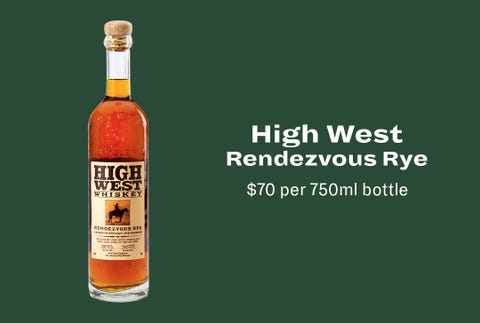
.
High West has been releasing reliable blends of sourced rye whiskey for over a decade, but 2018 marks the first time the distillery incorporated some of its own house-distilled whiskey into the mix. This year’s Rendezvous Rye is a blend of 95 percent rye from MGP and 80 percent rye/20 percent malted rye from High West, all aged between four and seven years. Other distilleries have been transitioning from sourcing to using their own spirits recently, but none so successfully as High West.
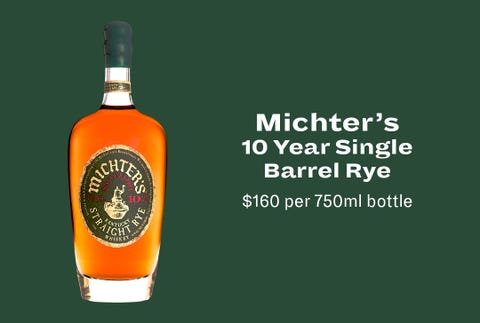
.
It will be a few years before Michter’s starts releasing its own house-distilled whiskey, but until then it keeps putting out some really good sourced releases. Unfortunately, these get snapped up as soon as they hit the shelves, a phenomenon that may be exacerbated by the reported Michter's shortage. Nevertheless, this year’s 10-year-old Single Barrel Rye release was outstanding, rich and creamy with bursts of toffee and soft pops of black pepper and baking spice.

.
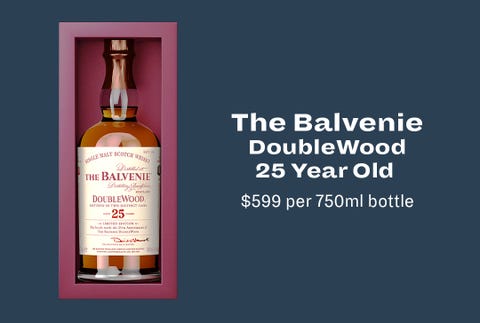
.
The Balvenie’s DoubleWood 12-year-old single malt celebrated its 25th birthday this year, marking a milestone for one of the first whiskies to be cask finished. To commemorate the occasion, the distillery released an excellent limited edition 25-year-old version of the classic that was distilled in 1993, the same year that DoubleWood launched. Like its younger sister, the 25 was aged in ex-bourbon barrels before being finished in sherry casks, but for just three months instead of nine. It’s a delicate whisky, full of dry spice, orange, and a bit of chocolate, with just a touch of dried fruit from the sherry casks.
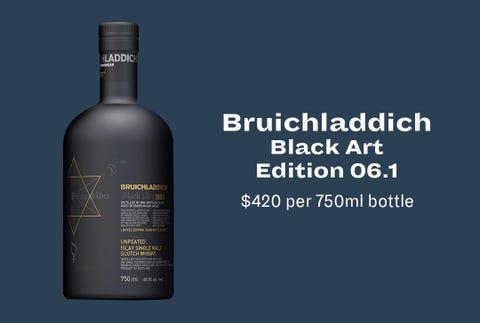
.
Bruichladdich’s Black Art is a whisky shrouded in mystery, but the quality is immediately apparent. This year’s 26-year-old edition was made from unpeated whisky, strange for a distillery known for producing some of the most heavily peated whisky available. The combination of casks for aging is kept under wraps, but a variety of sherry and wine casks were likely used, among others. Whatever the wood might be, this smooth, amber whisky is packed with flavor that is subtly sweet and altogether fetching.
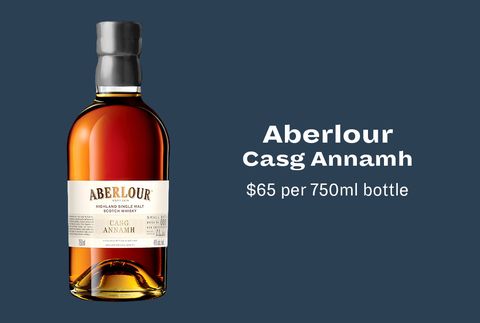
.
Aberlour is an unsung scotch distillery, constantly churning out delicious liquid that never gets as much attention as other Speyside operations. The new Casg Annamh, a triple cask matured whisky, isn’t as sherry-forward as some of the Aberlour’s other expressions, but it’s a winner all the same. The whisky was aged in a combination of Oloroso sherry casks, American oak barrels, and larger American oak hogshead barrels, and then married together. Some might look at this as entry-level Aberlour, but it’s a superb whisky in its own right.

.
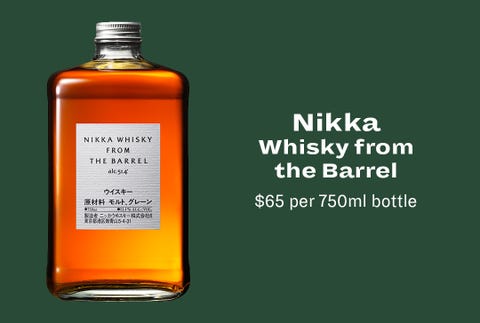
.
The world of Japanese whisky gets more rarified every day, but fortunately distilleries like Nikka are still putting out affordable bottles that don’t sacrifice quality. This blend is comprised of liquid from over 100 batches of malt and grain whisky distilled at the Yoichi and Miyagikyo distilleries, and aged in a variety of casks. It’s soft and floral with hints of toffee and coffee, an extremely well-balanced blend that highlights the best features of Japanese whisky.
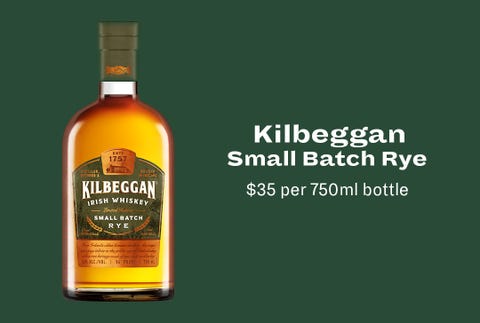
.
One of the most interesting entries into the expanding Irish whiskey category this year was Kilbeggan Small Batch Rye, the first whiskey to be distilled and matured at Kilbeggan since its 2010 restoration. The mash bill includes malted and unmalted barley, of course, as well as 30 percent rye—quite unusual for Irish whiskey. The result is what you’d expect, combining the creaminess of Irish whiskey with a little bit of rye spice. But it’s light and mellow and makes a great Old Fashioned.
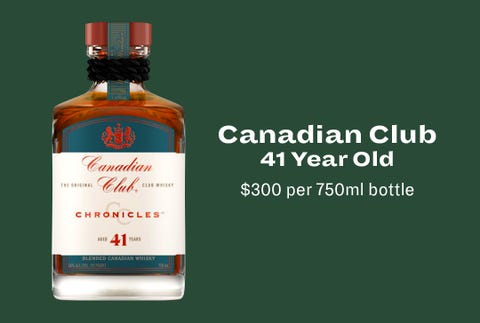
.
Americans have a love-hate relationship with Canadian whisky. As a country we drink a whole lot of it, even though whiskey snobs tend to look down on basic bottles of Crown Royal and Canadian Club. But the latter brand just made a bold statement with the release of its oldest whisky to date, longwindedly called CC Chronicles Issue No. 1: Water of Windsor. It is blended with a little bit of sherry, cognac, and rye (in Canada a distiller can add up to 9.09 percent of other spirits into a blend), and is full of rich fruit notes, and caramel and oak flavors.

.
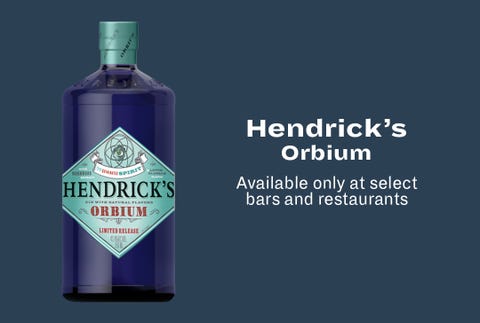
.
Hendrick’s is a popular gin that was at the forefront of using unconventional botanicals when it first launched. The brand introduced an even more unique limited-edition expression to the U.S. this month, the first new Hendrick’s expression ever. Orbium brings quinine, wormwood, and lotus blossom to the party, the first two of which are supposed to evoke the taste sensations of a gin and tonic and a martini. For now, the gin will only be available at select bars and restaurants.
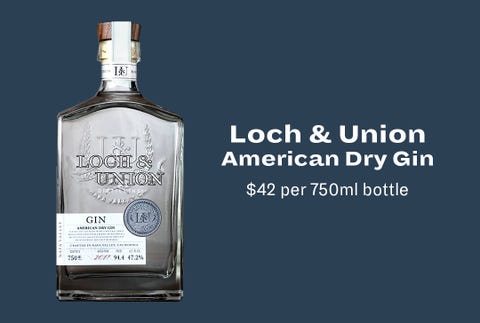
.
Napa is known for its wine, but there are also some Napa distilleries making high-quality spirits. One of these is Loch & Union American Dry Gin, which includes 12 different botanicals sourced from farms in eight different countries. The backbone of the spirit is still juniper, of course, but there’s a nice bit of sweetness and citrus to round it out. The distillery also makes a barley gin that is produced completely onsite.
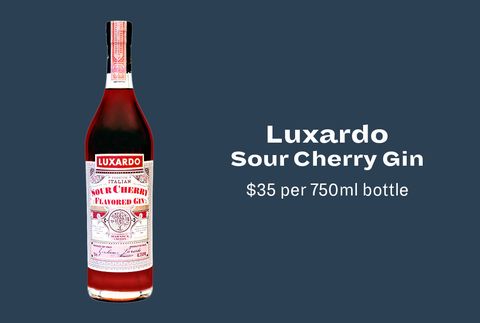
.
Flavored gin may not be your thing, which makes total sense, but give this one a chance. If you like Luxardo maraschino cherries (really the only cherries you should be using in cocktails), you will like this new release. The base is Luxardo Dry Gin, made with botanicals including coriander, bitter orange, and juniper. The spirit is then infused with Marasca cherry juice, grown in the Veneto region of Italy. It’s a little bit sweet and a little bit sour, a viscous red spirit that you can sip on the rocks or use in a cocktail.

.
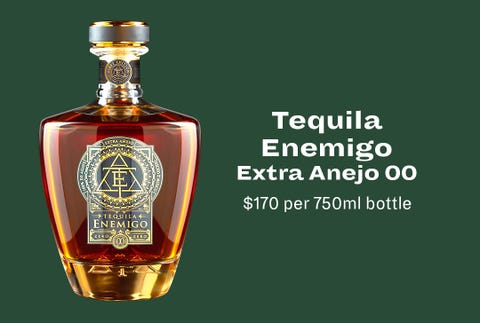
.
Enemigo is an upstart tequila company that contract distills and ages its spirits in Tequila, Mexico. The brand is expanding rapidly and has been winning awards at spirits competitions for its two expressions: a flavorful cristalino añejo, and a buttery extra añejo that will appeal to the most diehard whiskey drinkers. The extra añejo, aged for over three years, is a rich, dark amber color and full of notes of wood and tobacco, with the underlying agave sweetness shining through every sip.
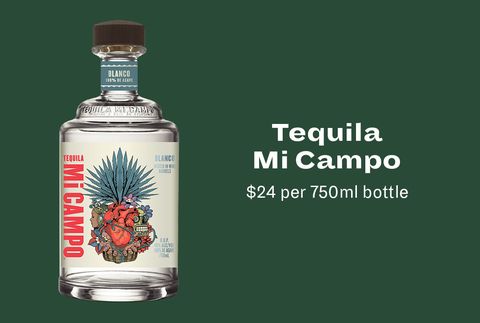
.
Tequila Mi Campo comes from the same distillery that makes the higher end Casa Noble. The low price point belies this tequila’s robust flavor. The blanco in particular is vibrant, with strong coconut and vanilla notes that complement the agave. Tequila Mi Campo is wine barrel-aged—the blanco spends three weeks in Chardonnay barrels, and the reposado spends three months in a mix of Cabernet Sauvignon and Pinot Noir casks. And instead of the agave piñasbeing crushed by a stone tahona, they are squeezed to release their juices, a new-school method that seems to work pretty well in this case.
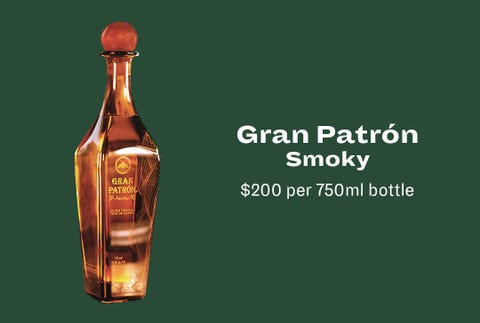
.
Why make a smoky tequila when you can just drink mezcal? Well, to begin with, technically tequila is a type of mezcal. But Gran Patrón Smoky is certainly Patrón’snod towards the rapidly growing mezcal category. The agave piñas are roasted for a week with mesquite in an underground pit before being tahona-crushed and distilled. The result is a blanco that has the smokiness and pepper of a mezcal without the more mineral, oily, charred flavors. In other words, this is a smoky tequila, not a mezcal, and the flavor difference between the two gives this spirit its purpose.

.
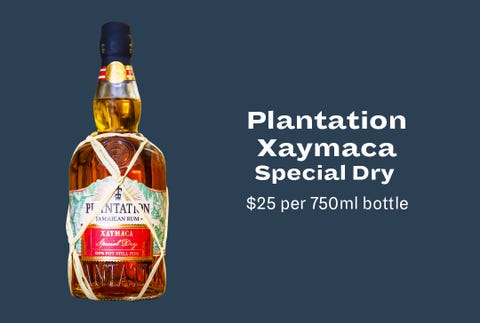
.
Maison Ferrand doesn’t just make premium cognac, the company also sources excellent rum that it ages in cognac casks. The latest expression is Plantation Xaymaca rum, a blend of pot still rum from two Jamaican distilleries that was aged in bourbon barrels. The blend is then further aged in cognac casks in France, a marked climate change from the tropics. Full of vanilla and nutmeg, it's a very nice, aged rum that doesn’t cost a fortune.
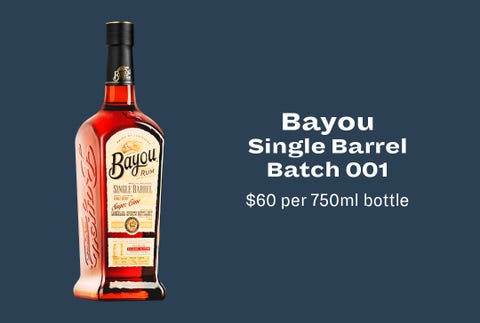
.
Louisiana-based Bayou Rum’s latest release is this single barrel expression, a prime example of American rum done right. What makes this particular rum special is that it was aged in rye barrels for almost two and a half years, as opposed to the usual bourbon barrels. It’s a subtle but effective tactic, infusing the rum with a hint of peppery rye spice that complements the inherent sweetness of the spirit.
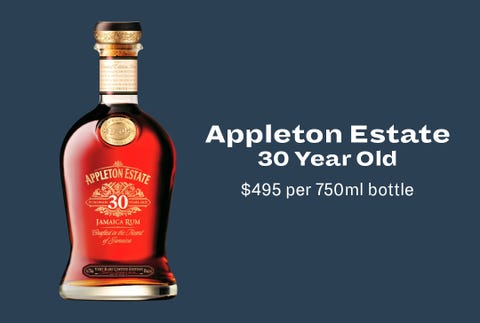
.
Joy Spence is a master blender in the true sense of the word, and Appleton Estate30 Year Old shows she is at the top of her craft. First released a decade ago in limited numbers, this year’s release is also an extremely limited run, with just 900 bottles available in the US. The youngest rum in the blend is 30 years old, but there is liquid in the mix that ranges up to about 50 years. It’s a sublime sip of rum, with warm notes of vanilla, a hint of smoke, and cloves.